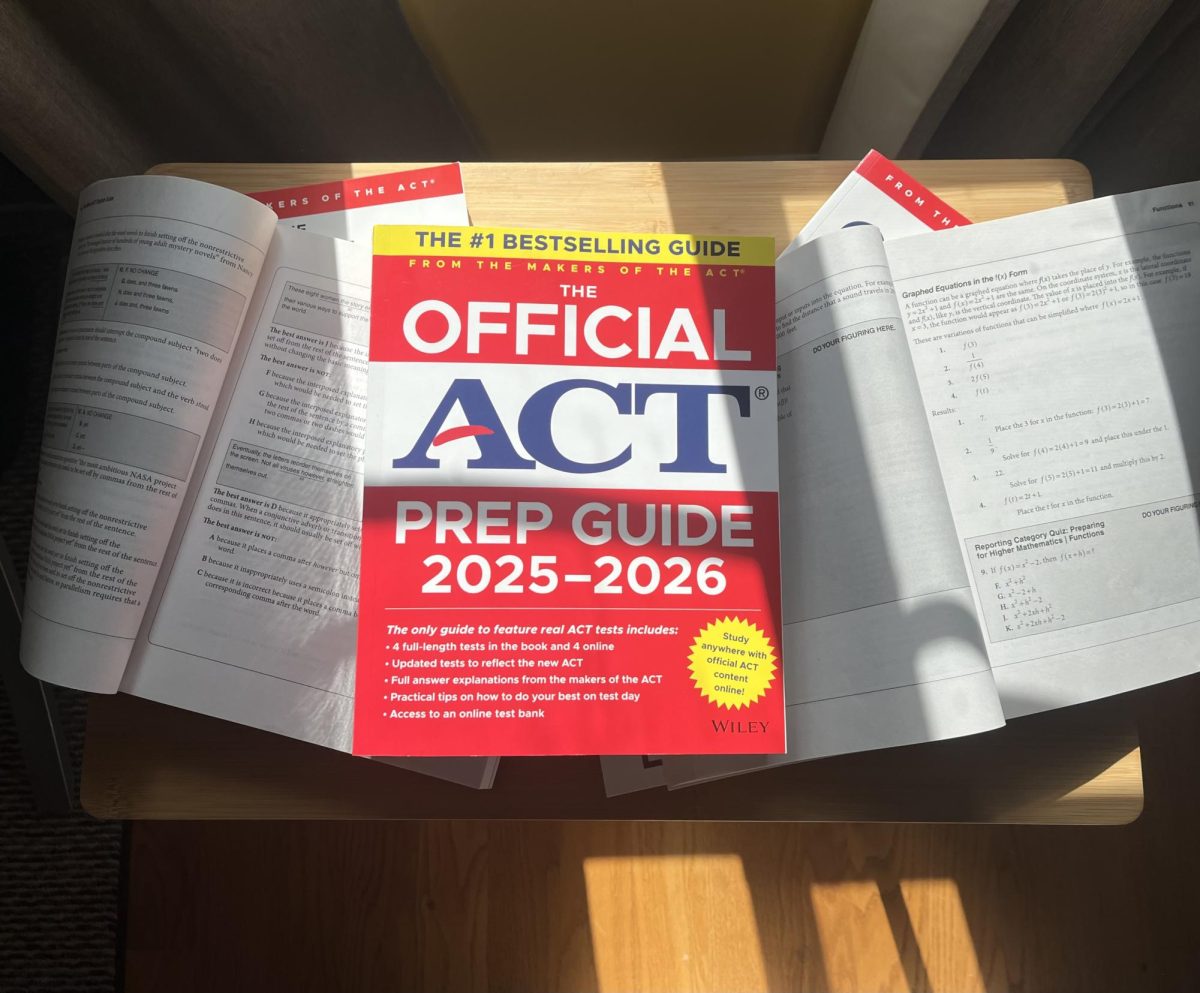Pencil at the ready, iPad propped up, test booklet open, feet tapping all around as the proctor loudly says, “begin.” This was the scene for juniors on Thursday, Aug. 27, as they began the practice ACT exam. This day was crucial for juniors as they prepare to take the state-administered ACT in the spring.
Krish Handa, a Palatine junior, said, “Going into the practice ACT, I felt underprepared, and during the test I was overwhelmed and stressed.”
By understanding the format of the ACT and how to prepare, students can feel confident tackling this crucial exam.
The ACT, or American College Test, is a college admissions test used across the U.S. since 1959, similar to the SAT. Illinois requires that all 11th-grade public high school students take the ACT exam as a graduation requirement.
Despite switches between ACT and SAT as state-mandated exams, as of the 2024-2025 school year, Illinois has chosen the ACT as the required exam. In April of 2026, all PHS juniors will take the ACT digitally on a designated morning.
The ACT measures skills in subjects learned in high school. The test has several sections: English, math, reading, science and writing (essay). However, in 2015, the writing section became optional, and in 2025, the science section followed suit. Unlike the SAT, the ACT offers the option to take the test on paper or digitally. However, the school-administered ACT in the spring will be digital and include all sections, including science and writing.
The main aspect of a student’s ACT score is the composite score, which is reported on a scale of 1-36. With science and writing being optional, the composite score is now simply the average of a student’s English, math and reading section scores.
One of the biggest changes to the ACT in the last year was the introduction of the new “ACT enhanced version.” The enhanced format is shorter with fewer questions and provides more time per question while keeping the content consistent with previous years.
According to act.org, the new format is “shorter, smarter, and built to help you succeed.”
The ACT sections are given in the following order: English, math, reading, science and writing. Here’s what to expect in each ACT section:
- English section: 50 questions in 35 minutes
- Math section: 45 questions in 50 minutes
- Reading section: 36 questions in 40 minutes
- Science section (optional): 40 questions in 40 minutes
- Writing section (optional): one essay in 40 minutes
When Palatine senior Ishhaan Mishra sat down for the school-administered ACT in the spring of 2025, he wasn’t sure what to expect. He had only taken the SAT before, but said, “Although I had never taken it, I felt like the shortened ACT was a little easier to digest compared to most standardized testing I’ve done.”
The enhanced ACT also incorporates experimental, unscored questions directly into each section. These allow ACT to experiment with its question-making. These are incorporated randomly, so students must try their best on all questions, but they will not affect the students’ scores.
Here’s a breakdown of the unscored questions in each section:
- English section: 50 questions, 10 are unscored (final score out of 40).
- Math section: 45 questions, 4 are unscored (final score out of 41).
- Reading section: 36 questions, 9 are unscored (final score out of 27).
- Science section: 40 questions, 6 are unscored (final score out of 36).
Mishra said, “School material definitely aided me in areas like the math and reading section, but I felt a little underprepared for the science section.”
In order to perform well and unlock one’s true scoring potential, preparing for the ACT is extremely beneficial. There are many ways for students to prepare for the ACT, but ultimately, students must figure out what methods work best for them.
Liz Sheehan, the English Department chair and one of Palatine’s ACT prep class instructors, emphasized the value of practice tests and tutoring for ACT preparation.
“Practice tests and tutoring are very valuable when it comes to preparing for the ACT,” Sheehan said. “Like any skill, recognizing and leaning into your strengths, while dialing in on working to develop areas for growth will always pay off. Students that take advantage of these opportunities with fidelity often see significant gains in their scores!”
Practice tests, tutoring, and other resources allow students to gain exposure to the test format, gauge their own areas for improvement, and continue improving.
Looking ahead to the spring ACT, Sheehan said, “practice consistently over the next eight months.” Practice truly does make a difference, no matter to what degree.
Sheehan suggested that students who might not have time for prep classes or practice tests can utilize resources like ‘Question of the Day’ on the ACT website. This service emails practice questions daily for students to steadily gain exposure and ultimately feel more comfortable with the exam.
While many colleges are test-optional, meaning they do not require applicants to submit an ACT or SAT score. A strong ACT score can likely boost chances of admission. Thus, students should try their best to maximize their score to keep their options open.
While juniors are only required to take the school-administered ACT in the spring, they can register and take the test as many times as they want. According to act.org, “on average, it takes students two to three times to achieve their testing goals.” Many students across the country decide to take the ACT multiple times to achieve a score they are proud of.
Apart from the school-administered ACT in April, there are various other national testing dates. For the 2025-2026 school year, the following are the national ACT dates still approaching: Sept. 6, Oct. 18, Dec. 13, Feb. 14, April 11, June 13 and July 11.
By understanding the ACT’s changes, flexibility and options, PHS students can feel confident walking into their exam in the spring and unlock their true scoring potential.
Sheehan said, “Consistent practice pays off.”










